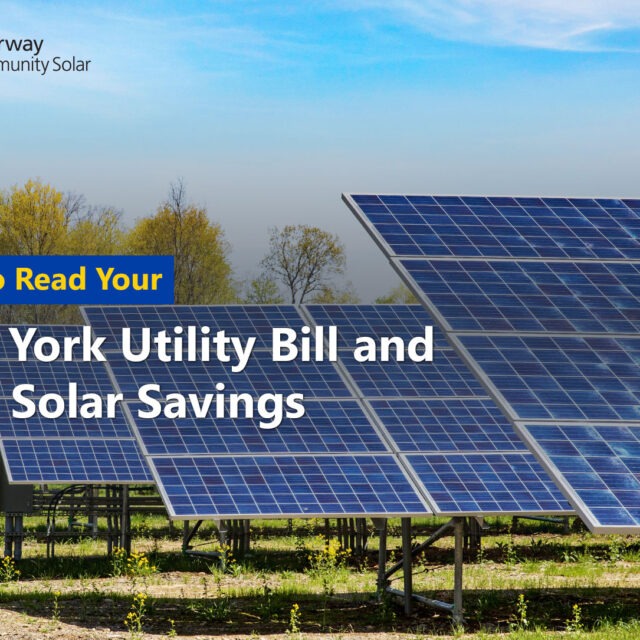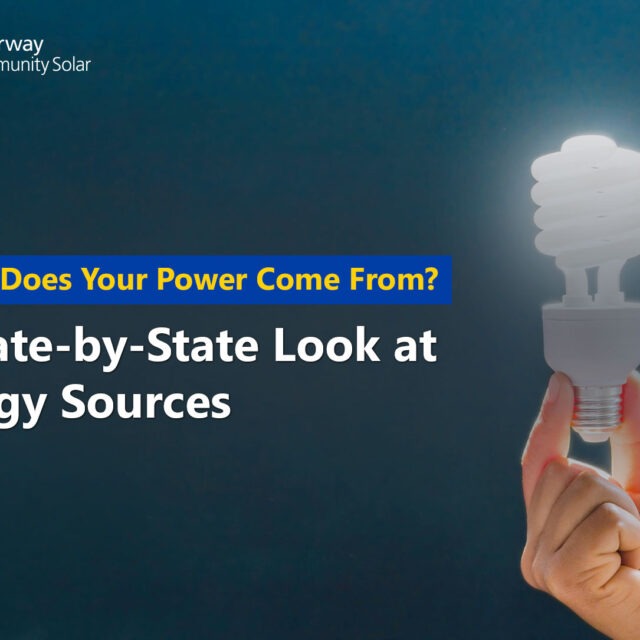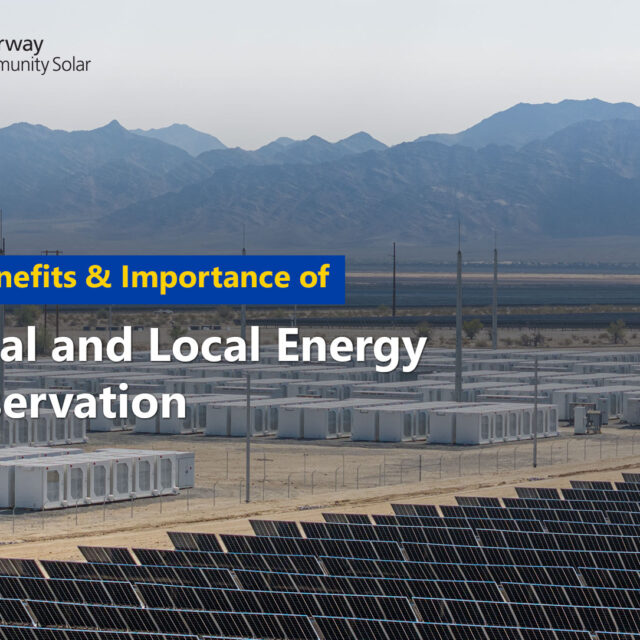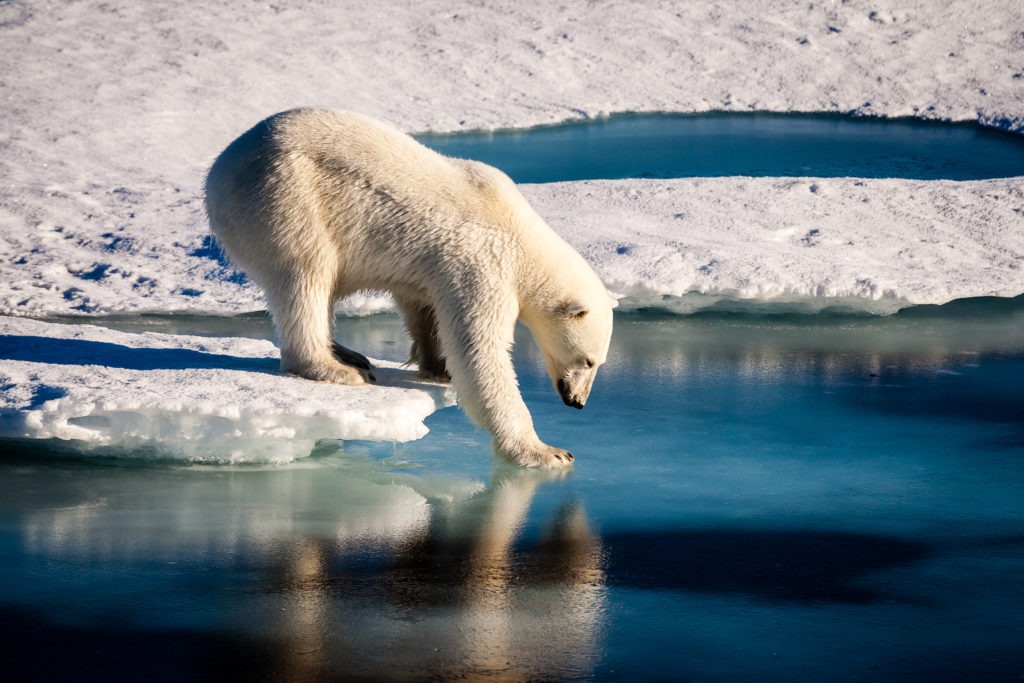
Parental Note: This experiment is geared towards ages 7 and up to be completed independently. The project may require some support to gather materials.
Additional Note: This experiment will take roughly 1 hour to complete; this calculation takes into consideration both setup time and the time needed to collect and analyze data.
Experiment Overview:
Although it is 93 million miles away, the sun is the closest star to Earth. Without heat from the sun, Earth would freeze and probably would not be able to support life. During the day while the sun is shining, Earth’s surface heats up. At night, some of that heat is released back into the air; while about 90% of that heat is absorbed by greenhouse gases (such as carbon dioxide) in the Earth’s atmosphere, and blocked from escaping. We call this the greenhouse effect. It’s called the greenhouse effect because the process is very similar to how the glass walls and roof of a garden greenhouse traps heat inside to grow plants in the winter. The perfect balance between some heat being released and some being trapped is what keeps our planet at a comfortable, livable temperature.
In this activity, you will observe how the greenhouse effect works by creating your own miniature greenhouse model and running an experiment.
Experiment Materials:
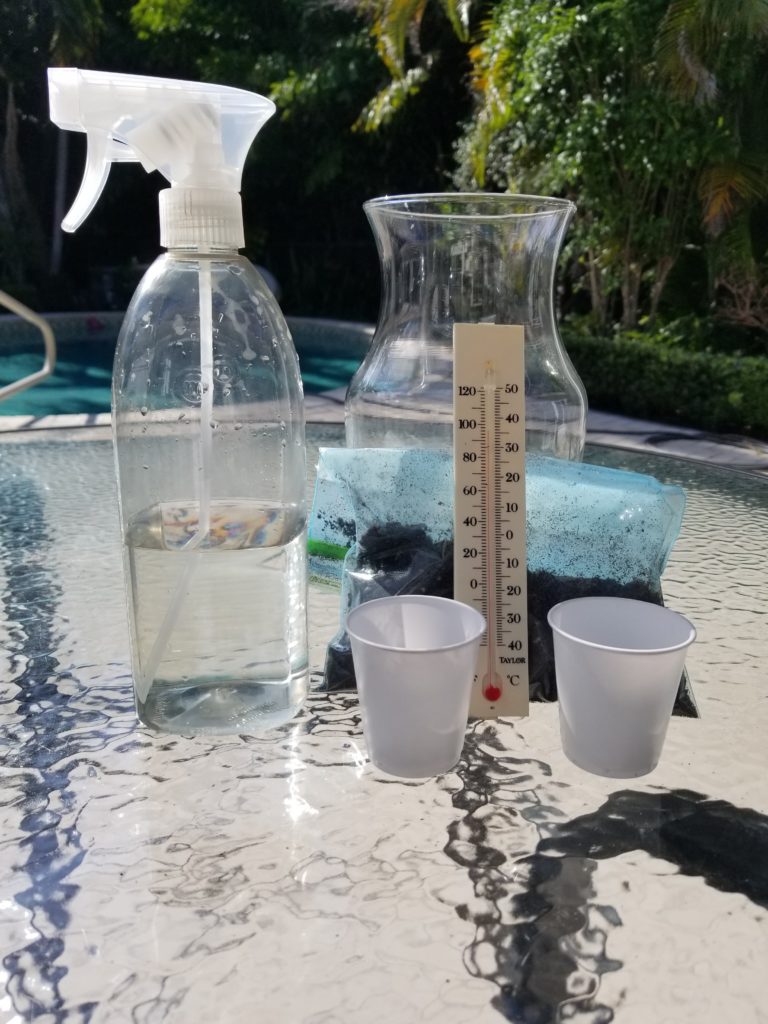
- One large clear glass vase, cup or jar (must fit over the cup and thermometer)
- Two paper cups
- Soil (such as potting or topsoil)
- Outdoor thermometer (must be small enough for the base to fit in the cup)
- Spray bottle with water
Experiment Process:
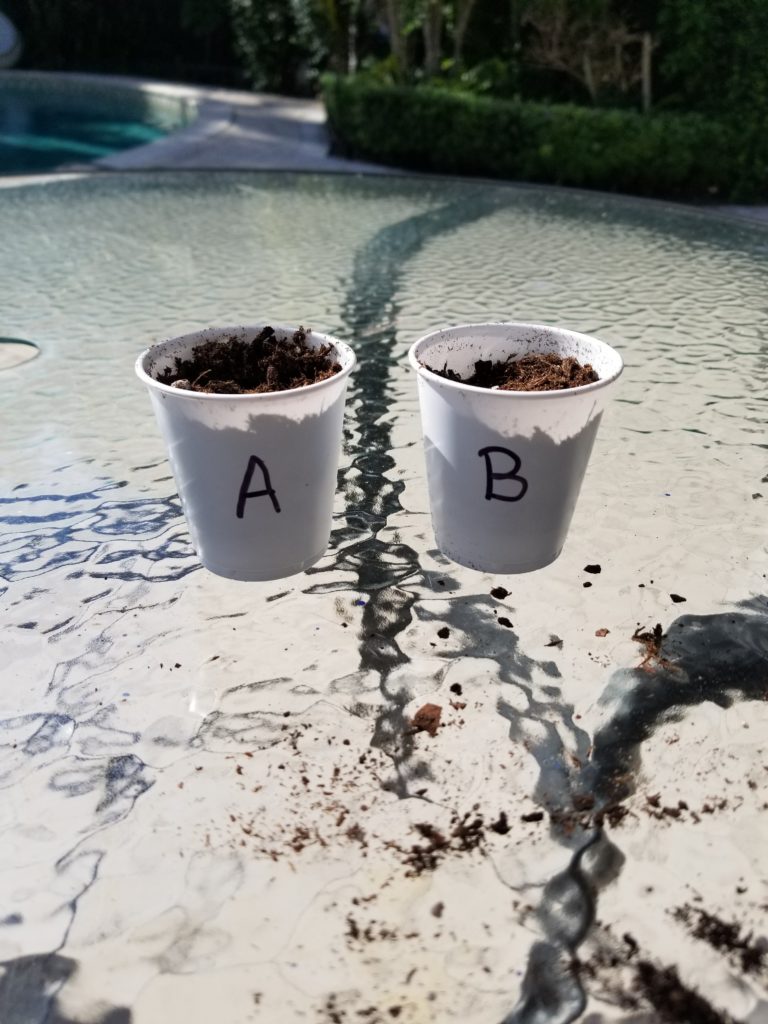
Step 1
Fill each cup with soil. Label one cup “A” and the other cup “B.” Cup A will be your experimental group (the group exposed to a change) and cup B will be your control group (the group that is not exposed to a change).
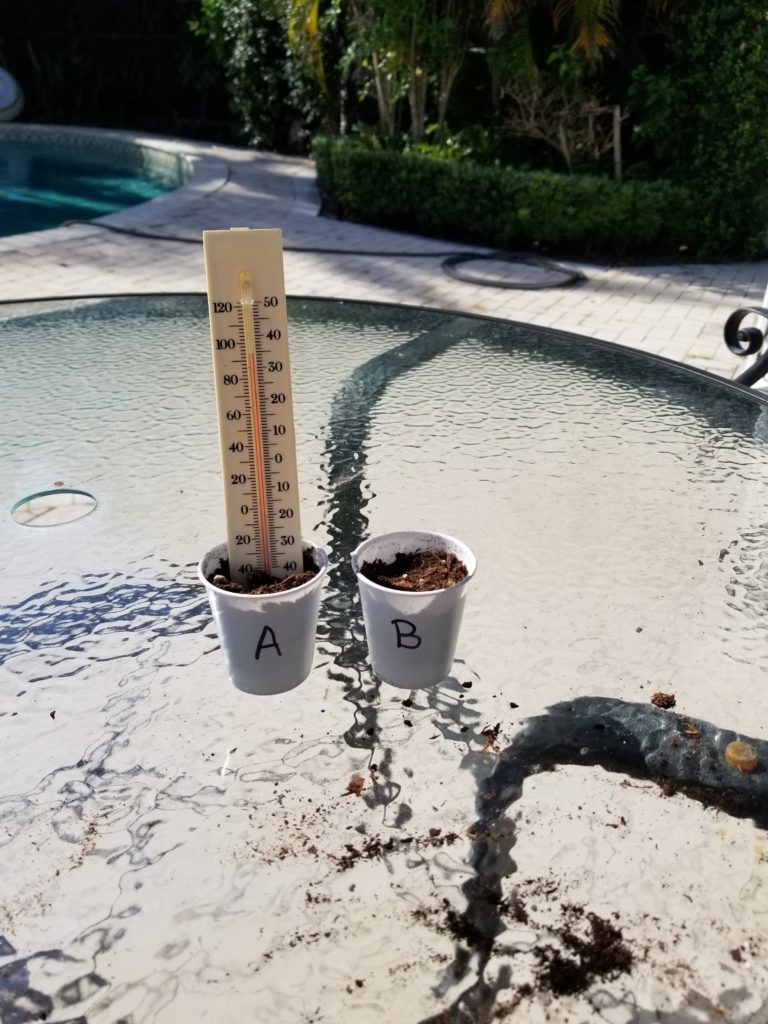
Step 2
Place the bulb of the thermometer in cup A. Make sure it is slightly covered by the soil.
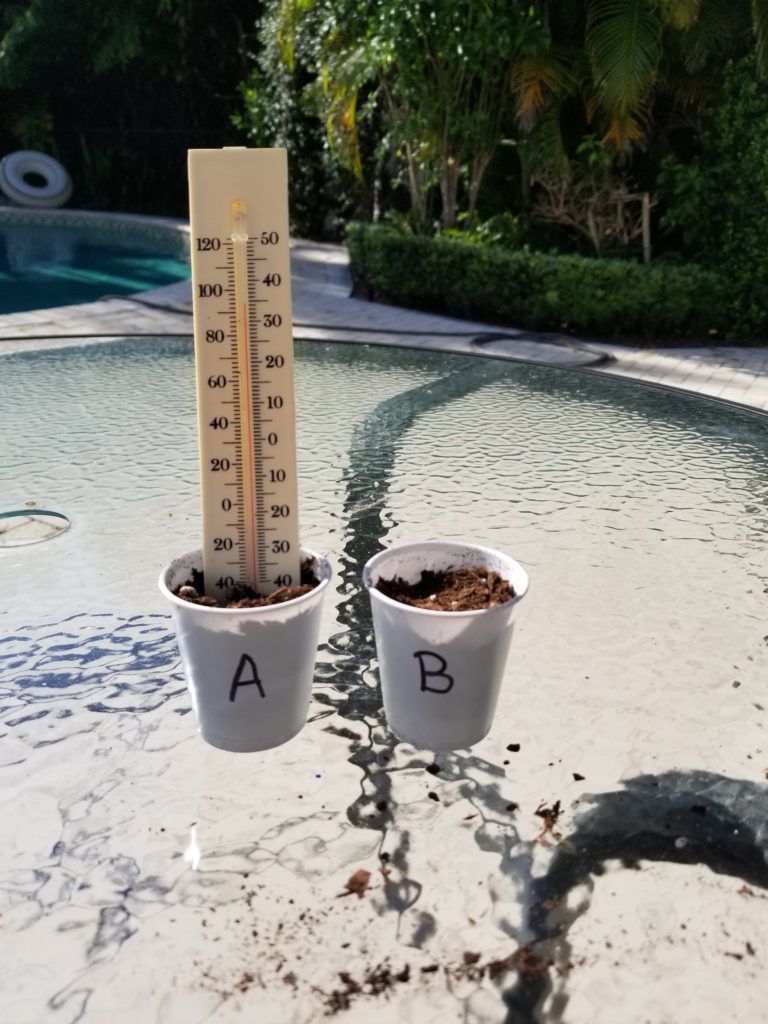
Step 3
Place both cups in direct sunlight for 10 minutes.
Step 4
After 10 minutes, record the temperature in cup A.
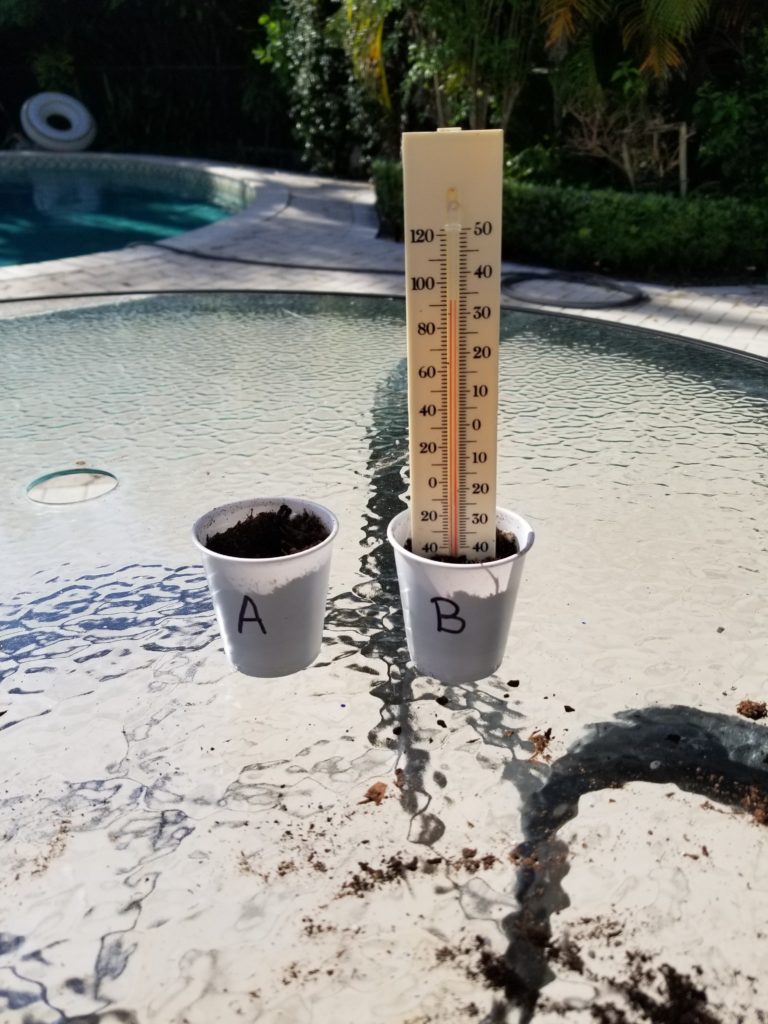
Step 5
Move the thermometer to cup B and record the temperature of the soil. Is it the same temperature as cup A?
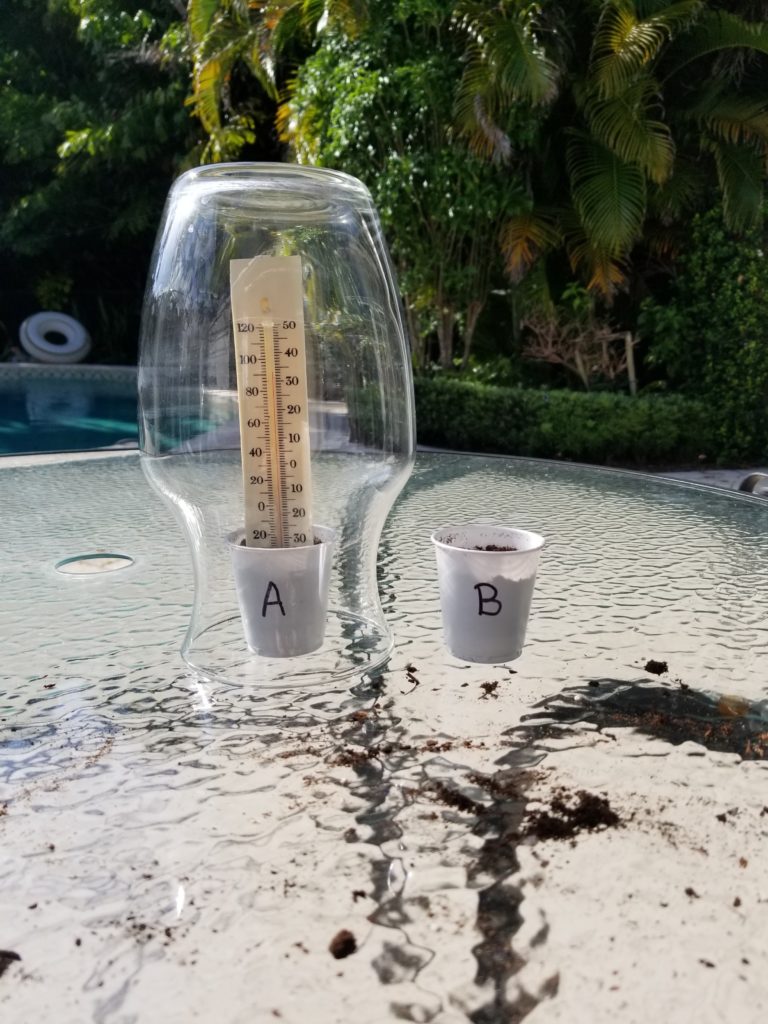
Step 6
Place the thermometer in the soil of cup A and place the glass vase (mouth down) over the cup and thermometer.
Step 7
Wait 10 minutes and then record the temperature in cup A. Next, place the thermometer in cub B and record that temperature.
Conclusions:
Share Your Results:
- What happened to the soil temperature in both of your cups when you exposed them to the sun for 10 minutes?
- When you put the glass vase over your experimental cup A, what happened to the temperature then? What caused this change?
Extension:
Burning fossil fuels to produce electricity and power motor vehicles causes more greenhouse gases to be released into the atmosphere than under normal conditions. This causes the greenhouse effect to intensify, which means more heat is trapped in the Earth’s atmosphere. Over time, this can cause the global average surface temperature on Earth to increase. We call this global warming or global climate change.
To simulate how excess greenhouse gases cause climate change in your miniature greenhouse model, spritz the inside of the glass vase with water. Place the thermometer in cup A and place the vase upside down over the cup with the thermometer. Wait 10 minutes and record your results.
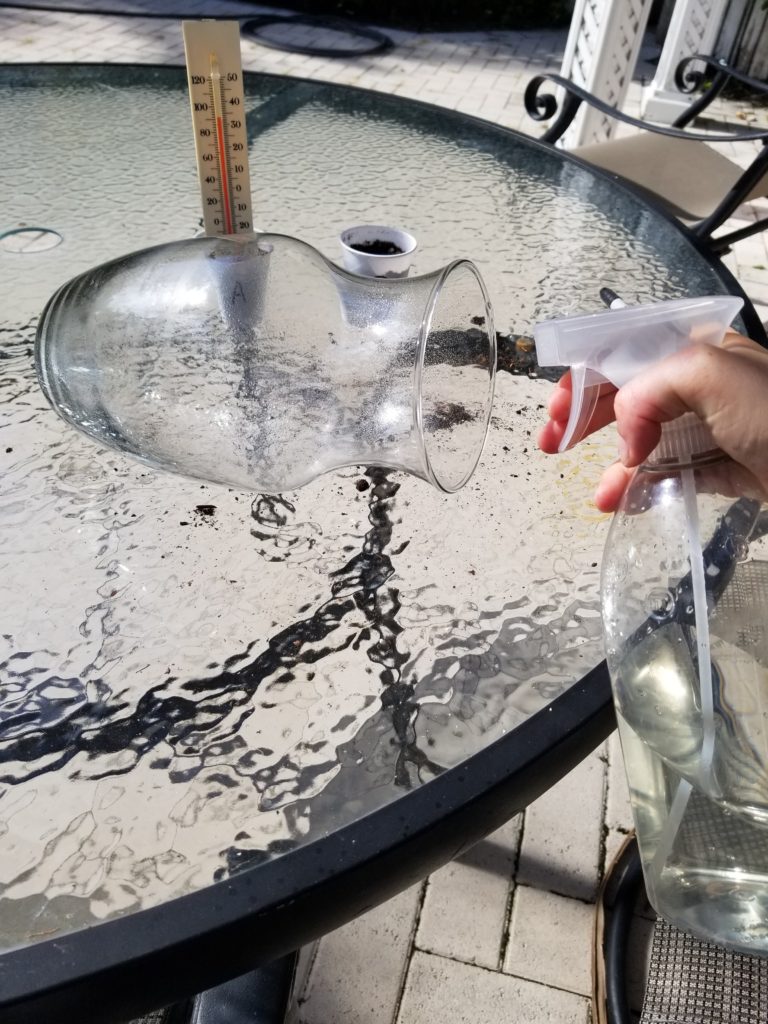 | 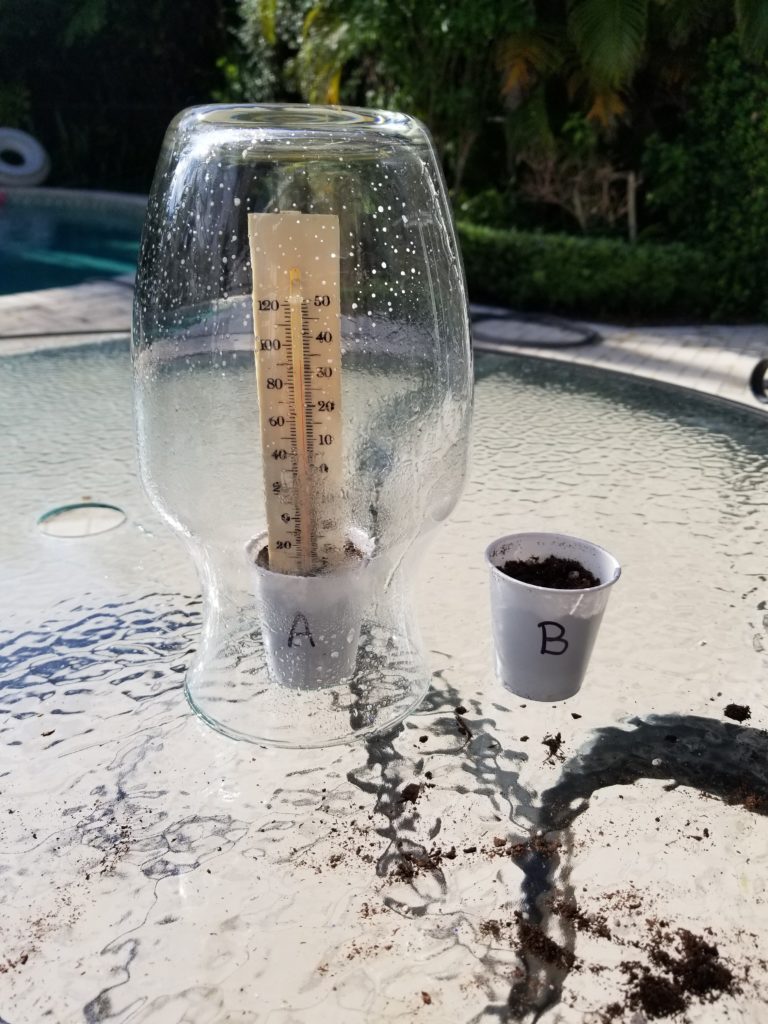 |
Extension Questions
- When you added the water to the vase, did the temperature in cup A increase or decrease? Why did this happen?
Conclusions:
The comfortable temperature of Earth is due to the heat from the sun and a very delicate balance of that heat being trapped and released due to the greenhouse effect. Gases that contribute to the greenhouse effect include water vapor, nitrous oxide, methane, and carbon dioxide. There are many natural processes that occur on Earth that release small amounts of these gases into the atmosphere and help maintain this careful heat balance.
Over the past century, however, humans have burned fossil fuels such as coal, oil, and natural gas. The burning process combines carbon with oxygen in the air to make carbon dioxide. This activity causes an increase in the number of atmospheric greenhouse gases, which causes the Earth’s temperature to rise over time.
Since 1906 (before the Industrial Revolution), Earth’s global average surface temperature has increased by about two degrees F. It may seem like a small change in temperature, but even just two degrees of a change has already caused problems such as coral bleaching and polar ice melting.
What are some alternatives to burning fossil fuels that people can do to send fewer greenhouse gases into the atmosphere? How does solar energy impact climate change?
